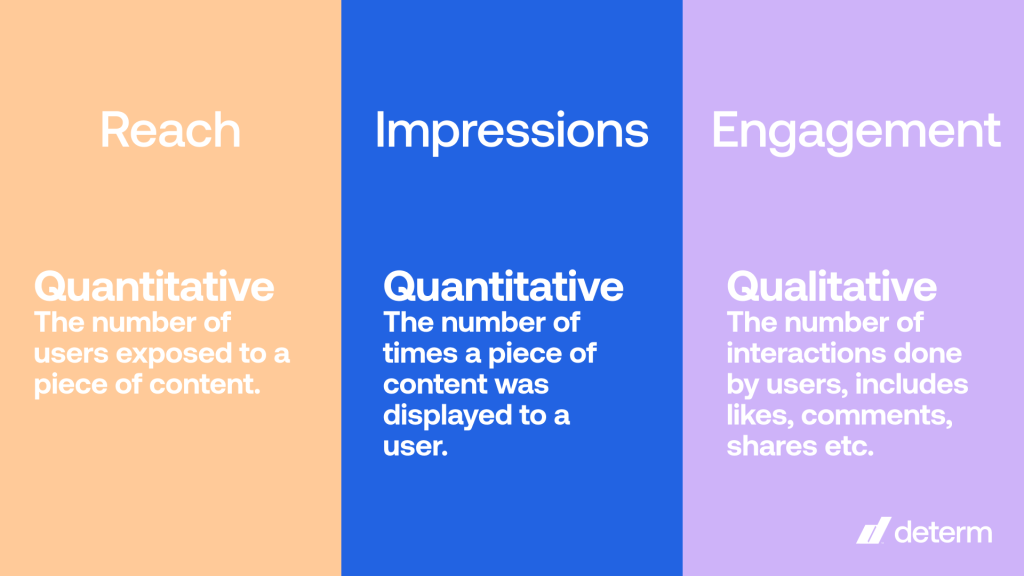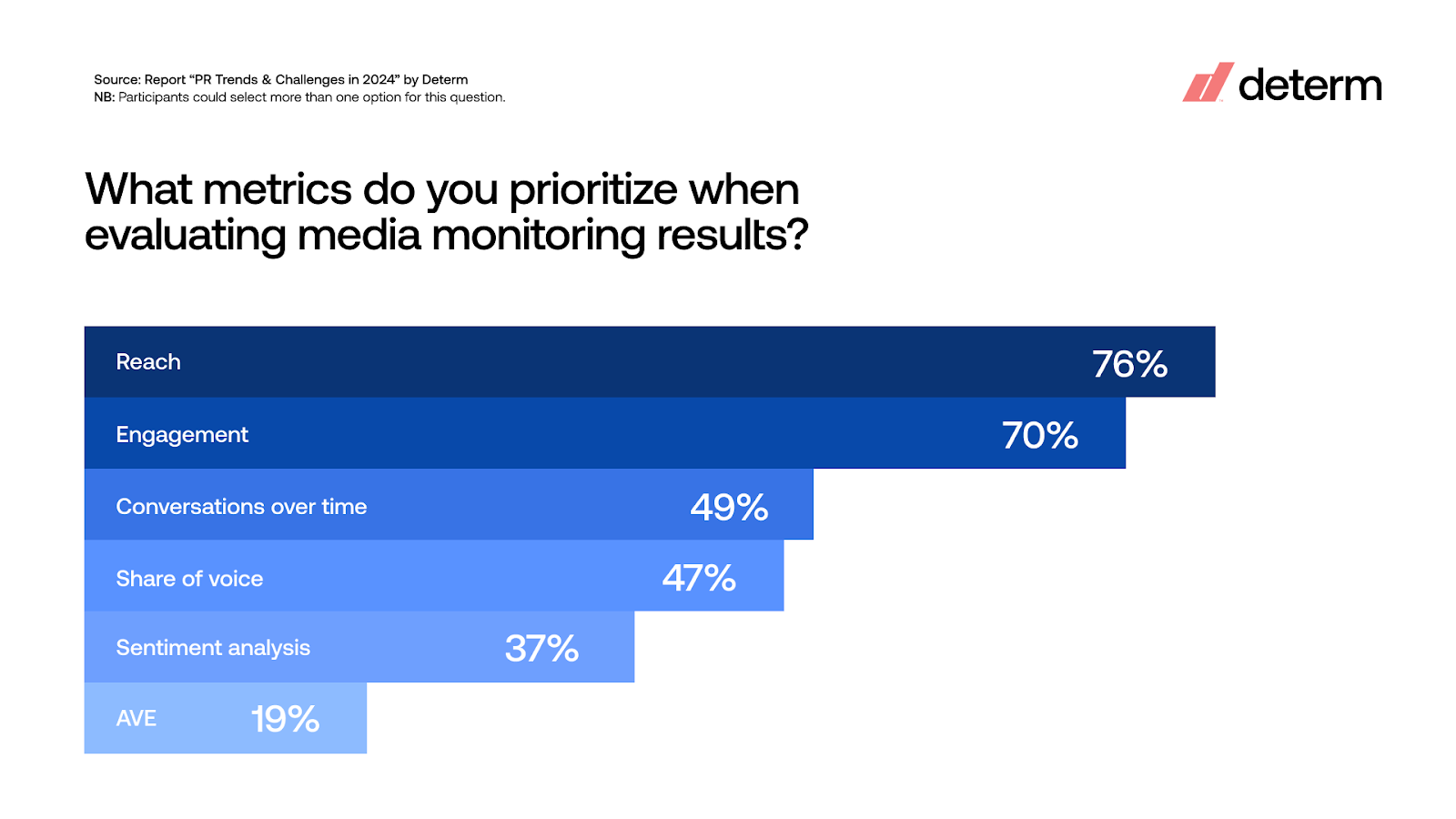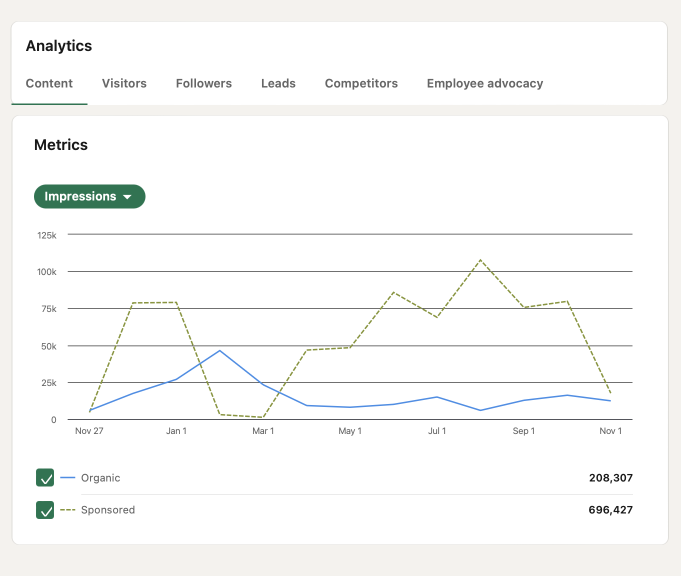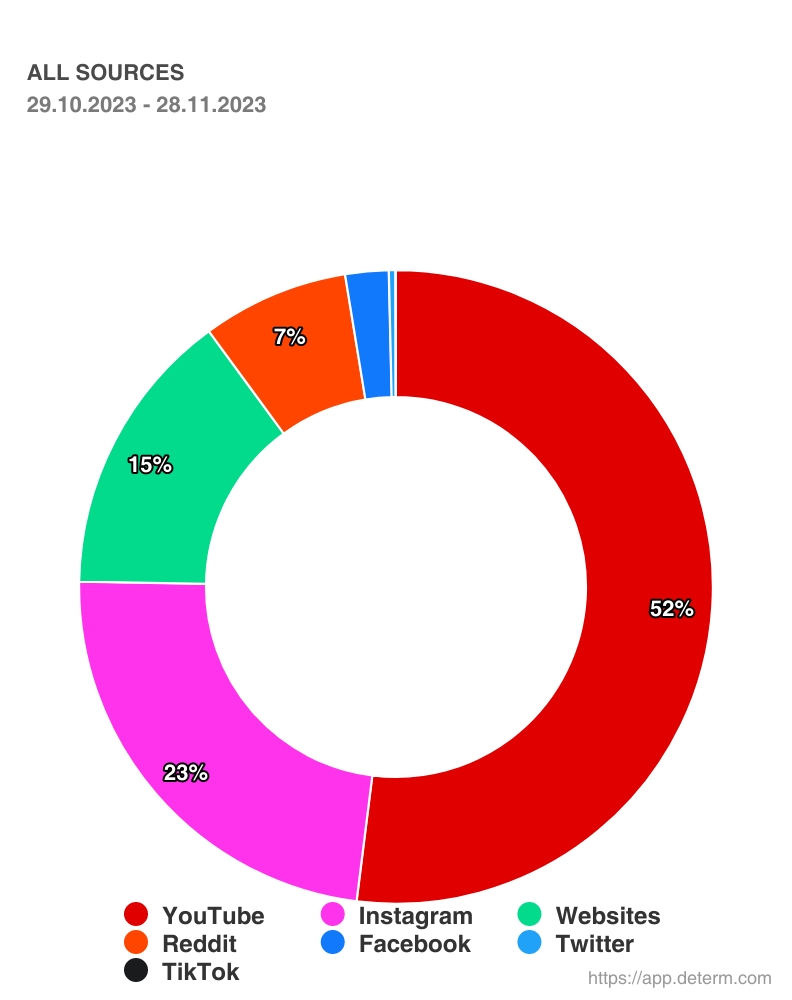In a perfect world, every one of your social media followers would see every piece of content you posted. However, that’s not really the case.
That’s why social media reach is not equal to the number of followers you have on your channel.
💡 Read Creating a Marketing Strategy that Works: Benefits, Steps, Tools
In this blog, we’ll define social media reach, why it’s imporant, how to can measure it and best ways to increase your social media reach organically.
What is Social Media Reach?
Let’s use a metaphor to explain what exactly is social media reach, and how it differs from engagement and impressions.
Imagine you’re hosting a party. Think of “Reach” like the number of invitations you send out to your friends’ party. “Impressions” are like the total number of times your party invitation is seen, whether someone clicks on it or not. It’s how many eyes notice your event and how many times each set of eyes sees the invitation. Now, “Engagement” is when someone not only sees your invite but RSVPs, shares it with friends, or leaves a comment. It’s the level of interaction and connection at your digital get-together.
So, Reach is your guest list, Impressions are how many times it was glanced at, and Engagement is the lively chatter and laughter that makes your online party memorable.

Now, to put it more formally, what is social media reach?
Social media reach refers to the total number of unique users or accounts who have come across a particular piece of content on a social media platform. It represents the potential size of the audience that has been exposed to a post, advertisement, or message. Social media reach is a key metric in assessing the scope and impact of content, indicating the breadth of its visibility within the platform.
It’s important to note that reach is different from impressions. While reach measures the unique users who have seen the content, impressions count every instance of the content being displayed, including multiple views by the same user. Social media reach is a valuable metric for businesses, influencers, and marketers to evaluate the effectiveness of their online presence and content strategy. Engagement, naturally, refers to all the clicks, likes, comments and shares on the posted piece of content.
Why does social media reach matter?
According to a recent survey on PR statistics by Determ, 76% of PR professionals prioritize reach when evaluating results, followed closely by engagement.

It’s clear social media reach matters for several reasons:
- Audience exposure
- Brand visibility
- Engagement opportunities
- Traffic and conversions
- Brand reputation and authority
- Competitive edge
Social media reach is one of the most important social media metrics. It’s essential for broadening brand exposure, increasing engagement, and driving website traffic. It establishes brand authority, fosters word-of-mouth marketing, provides valuable market insights, and offers a competitive edge in a dynamic digital landscape, ultimately contributing to overall business success.
Reach as a KPI
Brand managers and PR professionals often find it hard to measure the effectiveness of their efforts. This is where reach comes handy.
Social media reach is a useful metric that can be used to track:
- Hashtag reach
- Reach of marketing campaigns
- Reach in online media
- Reach of competitors
- Reach of events
- Reach of social media profiles
- Reach of influencers
Why hashtags matter for social media reach?
Hashtags may seem a bit confusing at first, but once you understand their role in increasing visibility and engagement, you’ll see positive results. Essentially, hashtags act as tools to bring together conversations or content on a specific topic, making it easy for people to find the content that interests them.
While hashtags can be used on various social media platforms, they are especially popular on Twitter (X), Instagram and TikTok. If you’re using social media for your brand’s marketing, using hashtags is crucial. Effectively using hashtags can boost your brand’s presence and significantly increase engagement. It goes beyond simple #throwbackthursday posts on Instagram; a successful strategy involves using a mix of popular, relevant, and branded hashtags.
According to a study by Tintup, 75.78% of consumers use social media to search for or discover new products or brands. To put it simply, social media is now a search engine. And hashtags are one way to get infront of your target audience.
Read Social Media ROI: How to Improve Your Outcomes
Tools and tips for successful hashtag, word and phrase research
Now since social media search bars often give results that are mentioned in hashtags and captions, these two get intertwined. They can be used for promoting products, starting engaging discussions, or targeting specific audiences. To make the most of the words you use alongside your content, you can explore social media monitoring platforms like Determ.
See, an AI social listening tool like Determ, provides you with three valuable charts. Let’s say you are in the skincare industry and your newest product is made for oily and acne prone skin. Here’s what you’ll be able to see by tracking mentions that mention your keywords “acne” & “oily skin”.

Phrase cloud


These charts highlight the most important words, phrases or hashtags that are used alongside a topic. You can then include these words (and content) in your social media posts’ captions to deliver quality and relevant content to your audience.
How to measure social media reach?
Social media reach means figuring out how many different people saw your posts. To do this, you use certain tools that count those people for you:
Measure reach with a social media monitoring tool
With Determ, for example, you can measure the reach of posts, hashtags, and accounts across platforms like Facebook, Instagram, X and LinkedIn. Combined.
Social media monitoring provides real-time tracking for user-selected keywords across the entire web, encompassing social media platforms, websites, news sites, blogs, discussion forums and various online spaces. This enables tracking company names, hashtags, event hashtags, marketing campaign names, social media profiles and more.
In Determ, Reach shows an estimated number of people who saw the mention (post) on social media. When you look at mentions in the feed, each mention has its metrics displayed at the bottom, including reach:

Determ offers additional valuable features to assist in building and monitoring your social media presence. These include identifying influential authors, tracking interactive mentions, receiving email alerts, integrating with Slack, and monitoring hashtag performance on social media platforms.
If these functionalities align with your needs, you can explore Determ and the best part, it’s free to test out after an initial demo call with our experts.
Measure reach within native social networks
You can also track your reach metrics directly via each native social media platform. For example, on Facebook and Instagram, reach can be measured through the “Reach” metric in the Insights tab. On LinkedIn, you can find it under the “Analytics” tab when you reach your Business profile.
Every social media platform will be measuring “Reach” for your social account, but you might just find them at different areas of each platform.

9 Ways to Increase Your Organic Social Media Reach
To address the decline in organic reach on platforms like Facebook, it’s crucial to grasp the reasons behind it. Without understanding why it broke in the first place, fixing it becomes challenging.
Many believe that platforms such as Facebook, Twitter, Instagram, and LinkedIn are solely driven by profit – and they are businesses, after all. While making money is essential, it’s not the sole motivator.
Brian Cristiano, a Reddit user, shed light on the complex reasons for this change. Highlighting Facebook’s push towards paid advertising, he explained that it aligns with Mark Zuckerberg’s vision to “engage platform users.”
Social media, including Facebook, employs the News Feed Algorithm, reminiscent of Google’s algorithms. This algorithm prioritizes showing users the most engaging content, classifying posts into a pool of just one percent of followers initially. If these individuals interact with the content, it reaches a wider audience.
Concentrate Your Efforts
Focus on platforms that resonate with your target audience rather than spreading thin across all social media.
Biggest mistake people make in 2023 is trying to be on all social platforms and getting nowhere, as they don’t build relationships on any platform.
Myth: You have to be on all social media platforms. And create tons of content.
Truth: You have to spend the majority of your time on the 1-2 platforms your ideal clients spend most of their time on.
Here are a few quick ways to figure out which platform is worth your time.
Simply inquire: Simply asking your audience for information is the best way to obtain accurate information. Use a survey, include it in an email, or call some of your most loyal customers to see how they’re doing.
Analyze your mentions across channels: If you have a social media monitoring tool, set up a topic that tracks either mentions of your company, your product, words that describe your product etc. This way you’ll see where your audience is the most and what channel they use to talk about their needs.

Look for your competitors: Finally, do a social media competitor research. What sites are others in your industry using to advertise? You’re probably not supposed to be there if you don’t see them on the platform.
Optimize Your Profiles
Like we mentioned before, social media algorithms work in the same way as seach engines like Google.
Optimize your social media profiles with:
- easy-to-remember usernames
- recognizable logos/photos
- keyword-rich descriptions
- and trackable website links.
Post Evergreen Content
Create content that doesn’t have an expiration date.
Address persistent issues or provide educational and entertaining posts. Remember, positive posts will always be shared more than negative ones.
Read How To Build A Content Framework That Serves Your Marketing Goals
Work Smarter, Not Harder
According to Facebook, an average user encounters more than 1,500 stories each day. However, the news feed selectively displays approximately 300 of these, showcasing the most relevant ones to enhance user engagement.
Myth: You need to create tons of content.
Truth: You need few high-quality content pieces for sure. Prioritize quality over quantity by producing fewer, higher-quality posts for increased organic reach.
Targeting for Organic Potential
Utilize platform-specific targeting options to fine-tune your audience and ensure the right people see your posts. Facebook and Twitter (X) have organic post targeting.
Post During Off-Peak Hours
Sticking to the ‘best times to post’ could be damaging your posts reach and engagement statistics.
Best times to post are usually generic and based on data across all industries.
Instead use the data in Google analytics (GA4 hourly traffic report) to find out when people are visiting your website by hour and on what device, then use this information to schedule your social media posts and adapt your content.
If 90% of your audience are visiting on mobile then make sure your content reflects this and if it’s LinkedIn your planning for, be mindful of the two algorithms.
Post the Right Kinds of Content
Experiment with various content types, such as videos, to discover what resonates best with your audience.
According to a study by Socialbakers, videos had the highest organic social media reach on Facebook by nearly 3%, which is significant given that the average has dropped to 1% or less.
Post a Mix of Promotional and Useful Content
Follow the 80/20 rule, with 80% of content being useful and informative, building trust before promoting your products or services. The other 20% will enable your customers to buy into what you’re selling.
Engage and Interact
Build a positive reputation and organic reach by engaging with followers, responding to comments, and fostering a genuine interest in your content. Although, with so many platforms customers use, it’s so much easier to keep track of all your online mentions with a media monitoring tool rather than doing everything manually.
The cornerstone of organic social media reach lies in strong search engine rankings. The focus should revolve around enhancing user experience, optimizing, and delivering high-quality content. When you align your social media strategies with your approach to SEO, you’ll observe a harmonious integration where the components seamlessly come together.
Conclusion
To sum up, mastering reach is key to impactful connections. Social media reach means exposure, visibility, engagement, traffic, conversions, reputation, and a competitive edge. Tools like Determ elevate your strategy by measuring reach and tracking hashtags. Hashtags, the bridges between conversations, enhance visibility. Determ makes tracking seamless, ensuring your content aligns with trends.
Increasing organic reach involves focused efforts, posting evergreen content, and engaging smarter. In the algorithmic world, prioritize quality over quantity. Understanding your audience, optimal posting times, and strategic experiments lead to success.
In conclusion, blend social media and SEO strategies for a powerful impact on user experience, optimization, and content quality. Leverage tools like Determ for insights, navigating the digital landscape to elevate your social media reach and leave a lasting impression. Cheers to meaningful connections in the digital realm!